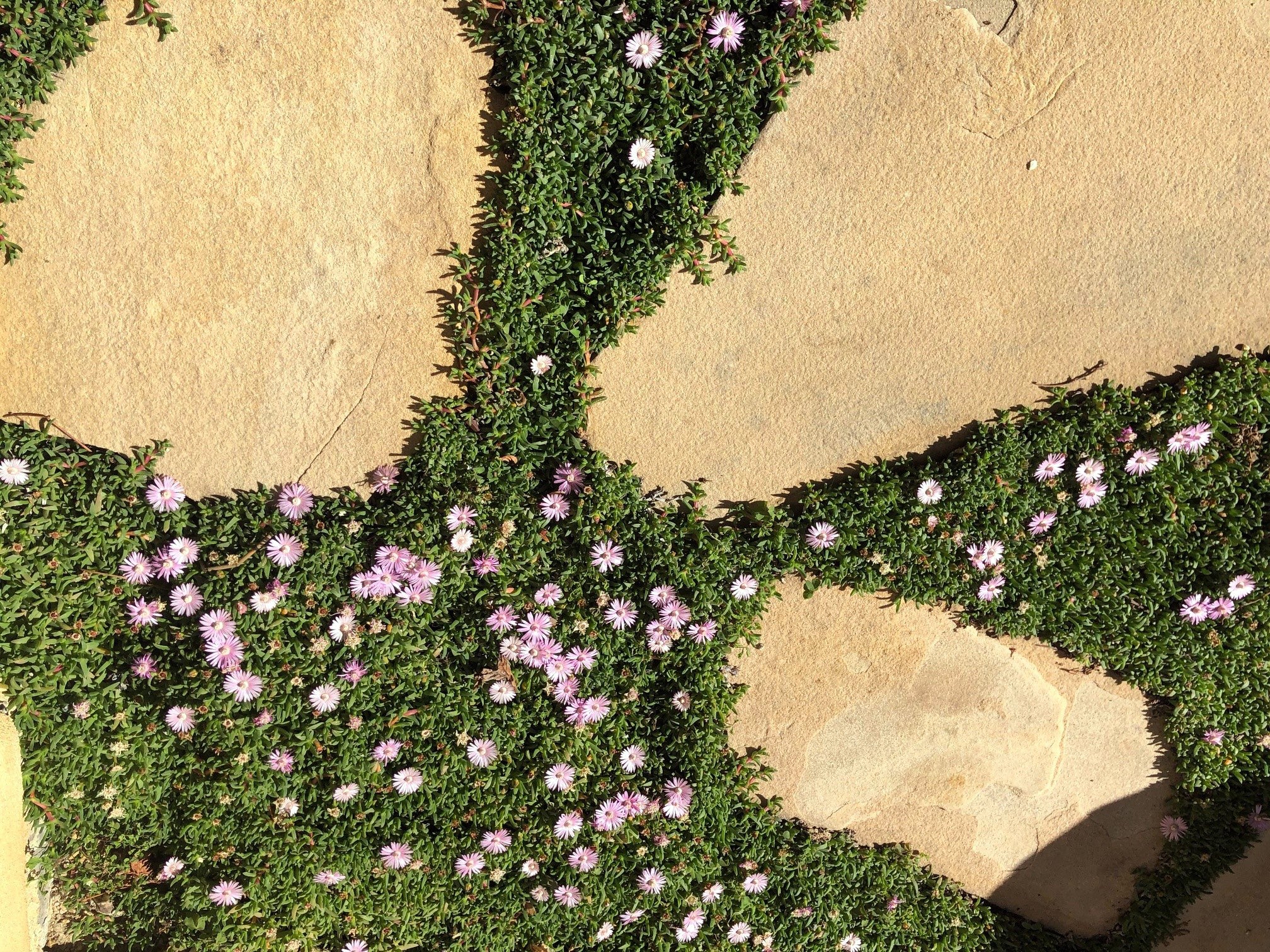Water Ruschia 'Nana' plugs lightly and frequently to keep them moist, without washing away the soil around the plugs. In the first 3 to 4 weeks, the Ruschia plugs will only benefit from the water that hits them directly overhead. Shortly thereafter, the plug roots will have entered the garden soil and will be able to draw moisture from it. If uncertain that plugs are getting ample moisture, dig down alongside some of them to determine whether they are being thoroughly wetted.
If using drip irrigation, it is generally a good idea to hand water the plugs in well for the first irrigation; for subsequent irrigations with drip lines, make certain that water is moving high enough in the soil to wet the entire plugs. Provide supplemental overhead water if needed in these first weeks. As with many drought tolerant plants, Ruschia 'Nana' has a very low water requirement, once established. Do not let plugs go unnecessarily dry during the key establishment period.
Subsequent 2-3 Months: About 4 weeks from planting, the irrigation regime should be switched from small amounts of water every other day to a more thorough, deeper watering two to three times a week depending on location and weather. Additional irrigation may become necessary in extremely hot or windy conditions until plants are established: if uncertain about soil moisture levels, there is no substitute for getting out there and digging down into your soil for a look.
Long Term Strategy: Once fully established, Ruschia ‘Nana’ will perform very well with just one deep irrigation a week during spring and summer and less in fall, winter, and early spring, and often even less after the first year of establishment. There is no one irrigation recommendation for Ruschia ‘Nana’; water needs will vary by local climate, soil type, time of year, type of irrigation system and irrigation methods. Most established Ruschia plantings will require a minimum of one irrigation once every 8-10 days to hold green color. In general, if plants foliage is yellowing, too much water is being applied; if uppermost growth of plants is starting to turn copper or brown in color, plants are being allowed to go too dry. NOTE: Ruschia 'Nana', along with any other plants in the landscape will often look as good (or as bad) as the irrigation system that is used to deliver water to it. You have invested in a very low water plant, but should not needlessly waste water with an automatic irrigation system that needs to run longer due to poor design, poor water distribution, clogged nozzles, leaks, or an inability to reprogram the irrigation clock!

